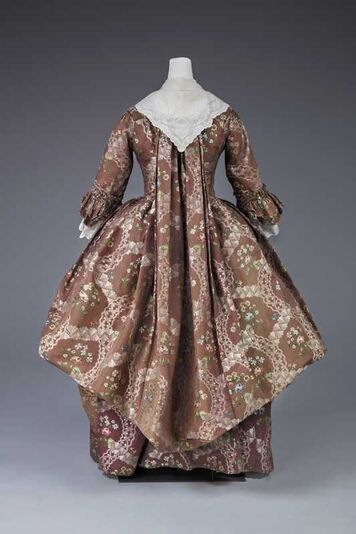|
Absorbing Surprises in Historical Costume (a.k.a. Fashions that shouldn't exist) As a fashion historian I always try to be aware of what I call “absolutism” when thinking about or discussing historical costume. One of the easiest and most enticing traps to fall into where historical dress is concerned (particularly for time periods prior to the mid-19th century) is making unconditional statements or conclusions based on what is necessarily a limited supply of evidence.
I've always believed that the further back in time one goes, the less justifiable it is to indulge in "fashion absolutism", i.e. rule-making. This is often proven true with the sudden appearance on the open market of an historical garment in a style or construction that "should not exist". Avoiding such difficulties is essentially a matter of seeing beyond what might ordinarily seem to be settled borders of history. Put another way, it means training the eye and mind to accept what is really there, sometimes without being able to fit an item neatly into a previous category. This is especially the case where the 18th century is concerned, in fact for any time prior to about 1860, when photography and mass-market print publications became widely available, giving us a more direct window into what people wore.
1 Comment
|
AuthorPatricia Preston, a.k.a. The Fashion Archaeologist, Historian, linguist, pattern-maker, enthralled by historical fashion, especially the 18th, 19th and 20th centuries.. Archives
August 2022
Categories
All
|
Site powered by Weebly. Managed by Dot5Hosting


 RSS Feed
RSS Feed